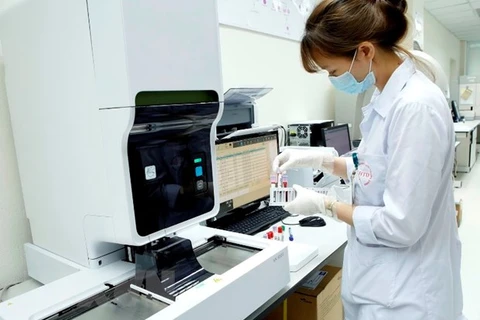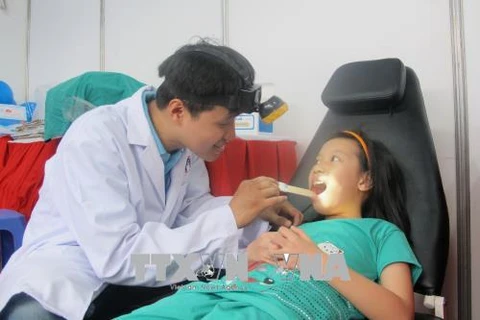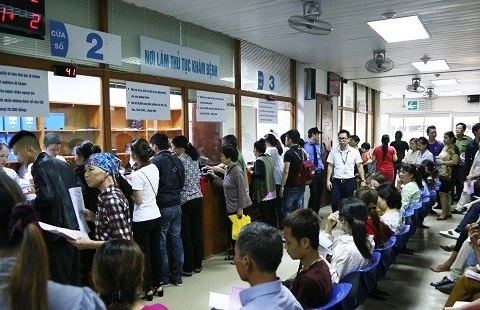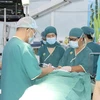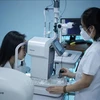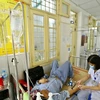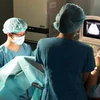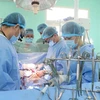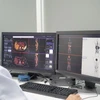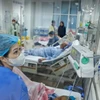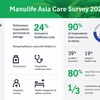Hanoi (VNA) – To meet demand for medical examination and treatment, the Ministry of Health (MoH) has issued a circular guiding the building of service fees for on-request services at public health facilities.
Per a roadmap of the MoH, this year, medical fees will be adjusted based on the increased basic salary of 1.49 million VND (64 USD) and management expenses of medical facilities.
However, the planned increase of medical service fees would depend on the consumer price index and socio-economic conditions in 2019, said Nguyen Nam Lien, head of MoH’s Department of Financial Planning.
He revealed the information during the MoH’s press briefing on June 4 on five years implementing programmes to improve patient satisfaction, hospital cleanliness, medical care quality improvement and reform of finance-health insurance mechanism.
Building medical service fees of services on request
Lien said the MoH will devise an efficient medical services price list to realise the target of transferring State budget’s regular allocation from health facilities to people covered by health insurance, with a proper roadmap.
At present, healthcare prices are calculated based on the previous basic monthly salary of 1.39 million VND (59 USD) and direct costs for examination and treatment.
This year, healthcare costs will be calculated based on the increased basic salary of 1.49 million VND (64 USD) and include management expenses of medical facilities.
However, the planned increase of medical service fees would depend on the consumer price index and socio-economic conditions.
If this year’s conditions are unfavourable, the ministry will report to the Prime Minister and the committee on price management to consider any change in 2020. Next year, depreciation expenses will also be added to the prices for medical services, he said.
Regarding healthcare service prices, Lien said that to meet people’s demand, including those with high income, the MoH issued a circular guiding the calculation of medical services fees in public health facilities.
The circular regulates the methods to calculate fees in the principle of fully counting all examination and treatment costs as well as reasonable amount for hospitals to reinvest. Leaders of health facilities providing on-request medical services are tasked with deciding the fees of such services and publicly listing the fees in accordance with the law.
At health facilities using infrastructure and equipment invested by the State to provide on-request services, their heads can decide the fees of such services but no higher than the maximum stated by the MoH.
66,000 calls to the MoH’s hotline
A representative of the MoH said in 2018, the patient satisfaction index (PSI) at 53 centrally-run, university and provincial hospitals hit 83 percent.
Meanwhile, the results of a survey conducted through phone calls showed that the PSI at 60 hospitals in 23 provinces and cities hit nearly 81 percent, a rise compared to the previous year, according to Director of the Medical Services Administration (MSA) under the MoH Luong Ngoc Khue.
Notably, hospital cleanliness saw an improvement. The percentage of hospital receiving very good and good ratings hit 95 percent and no hospital was rated as bad. Hospitals’ restrooms, which previously received most patient complaints, have been improved.
In the three years from 2016 to 2018, there were some 66,000 calls to the ministry’s hotline, but only nearly 12,500 calls were relevant, accounting for a fifth.
Hospital infrastructure and professional skills received most complaints at 71 percent of the relevant calls. Meanwhile, 16 percent of the calls were to complain about the staff’s attitude, equivalent to the last two years.
Numerous measures have been applied to obtain the announced PSI. The MoH issued seven circulars aiming to shorten the process of medical examination and treatment and waiting time; different work-wear for medical staff; hotline and mailbox for enquiries; an office to provide guidance and support for patients when they encounter difficulties in hospitals; and code of conduct, rewards and discipline for medical staff.
This includes a circular on financial reform which regulates that direct costs for examination and treatment, including salary of medical staff, will be counted in calculating medical services fees paid by health insurance.
To improve staff’s attitude and hospital quality, the MoH will conduct more unscheduled inspections at hospitals.-VNA

